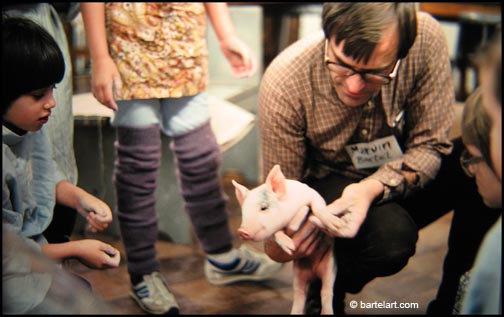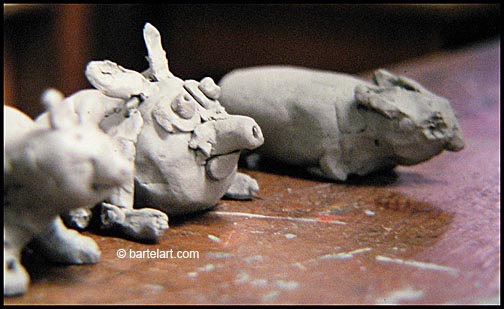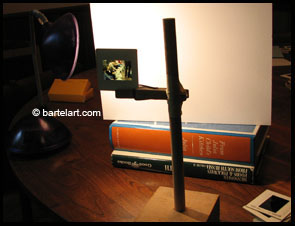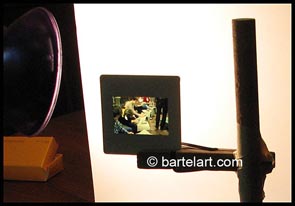Copy Slides With Your Digital Camera
by Marvin Bartel, 2008 ©
|

This image and the clay pigs at the bottom of this page were both copied from slides taken during an art lesson 30 years ago. Here I was showing baby pigs to some children who then used the visual experience to learn how to make clay pigs (shown below).

This image was copied from a 35mm slide. These clay pigs were made by children by cupping two pinch pots over a wadded newspaper core. They used wooden paddles to help join the clay cups over the wad of paper and to refine the forms. A small vent hole in the bottom is needed for firing. Heads can be made by adding another pinch pot. Paper may be left inside. The head also needs a small hole, or a hole is made between the head and the body.
For fun, what if you ask the children what they think would happen of they place a small ball of clay in the paper that is in the animal. Do not tell them what will happen. Encourage experimentation and curiosity. After firing, see if they discover what happened to the paper. See if they discover that the animal rattles.What would need to be done to make the animal into a whistle or into a musical instrument? Are your students inventive and creative? Could your students experiment and invent a musical instrument animal without telling them how to do it? How is an inventive mind formed? ---> to top of page
Other essays on Art Education Home page by the same author
How to copy images from the Internet to use in teaching art history
How to Hang Artwork Temporarily with Masking Tape
Creativity Killers in the art room
Conversation Game one way to generate creative ideas for artwork and teach a bit about social skills
Advocacy for Art Education in our schools
The Secrets of Generating Art Ideas: An Inside Out Art Curriculum. © 2006
http://www.bartelart.com/arted/ideas.html
biography of author
All rights reserved. This page including the photographs are © Marvin Bartel, Emeritus Professor of Art, Goshen College. Teachers many make a single copy for their personal use so long as the copyright notice is included. Scholarly quotations are permitted with proper attribution.
Last updated June 27, 2008
For permission to make more copies or handouts, contact the author

